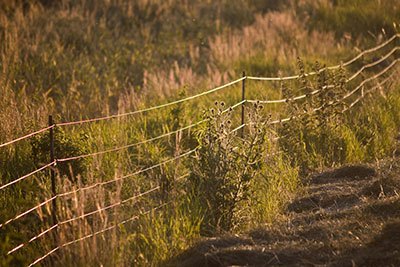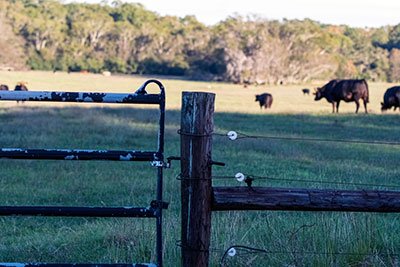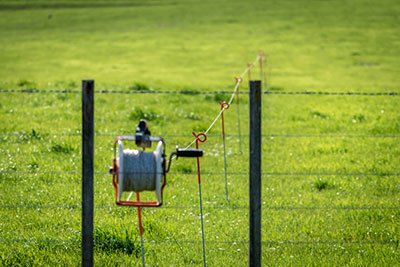Are you a farmer looking for more information on electric fencers and their components? You’ve come to the right place! Understanding the different parts of your electric fence system is vital if you want it to work effectively.
In this comprehensive guide, we’ll break down each part so that by the end of it, you will be an expert in building and maintaining your electric fence.
Take away key points:
- There are various electric fencer parts to keep your fences optimal and prevent intruders from stepping in
- These parts come in various size, shape, and type details to ensure the best use and let you find the best solution for your needs
- Ensure you read the guide below thoroughly to understand all repair parts the fencing system must have to work properly
Table of Contents
You must know all electric fence parts and accessories to ensure the best work for your construction. Luckily, you can find the crucial details in the list below, to find, repair, or replace the parts for your animals.
Learn the electric fencer parts here!
What is an electric fencer & how does it work?

An electric fencer is a device that uses electric shocks to deter people and/or animals from crossing a boundary. It works by sending an electric current through the fence, which gives off an unpleasant shock when touched.
Electric fencers are commonly used in agricultural settings to keep livestock contained within their designated areas. They can also be used in residential settings to keep pets or wildlife away from gardens and other areas.
Electric fencers come in many different shapes and sizes, ranging from small portable units to larger, more powerful models. The type of model you choose will depend on the size of the area you need to guard, as well as the type of animal or person you are trying to keep out.
For example, if you are looking for a way to keep deer away from your garden, then a more powerful model may be necessary.
When using an electric fencer, it is important to follow all safety instructions carefully and make sure that all wiring is properly installed and maintained. Additionally, it is important to check the fence regularly for any signs of damage or wear and tear so that it continues to work properly.
What are the electric fencer parts?
An electric fencer is composed of several products that work together to provide an effective and safe fencing system.
The main components of an electric fencer include: the energizer, fence wire, insulators, switches, warning signs, earth stakes, buckle connectors and clips, connection cables, testers.
1. Electric fence energizer
The electric fence energizer is the most important part of the electric fencer as it provides power to the electric fence. It converts electricity into a high-voltage pulse which travels along the electric fence wire to keep animals contained and predators out. The energizers are also known as electric fence chargers.
Electric fence chargers come in various types such as AC-powered low impedance, solar-powered, and battery-powered. They are designed to contain small animals, keep crops safe from pests and predators, and provide a safe environment for livestock.
The most common types of electric fence chargers are AC-powered low-impedance models. They work by delivering a high-voltage shock when an animal touches the fence. This shock is enough to deter most animals from crossing the boundary but not enough to cause any harm.
Solar-powered electric fence chargers use solar panels to absorb light and convert it into electricity which is then used to power the fence line.
Battery-powered electric fence chargers are great for temporary fencing as they can be moved around easily and require no external power source.
2. Electric fence wire

An electric fence wire is a type of fencing parts that uses electricity to keep animals in or out of an area. The needed parts work by delivering a shock to the animal when it touches the wire, which trains them to stay away from the fence.
Electric fence wire is typically made of galvanized steel and comes in two sizes: 14 gauge and 17 gauge. The 14 gauge is used for shorter fences while the 17 gauge is better suited for longer fences.
Electric fence wire parts can be used for both permanent and temporary fencing applications, making it a versatile option for farmers and ranchers. Additionally, electric fence wire can be combined with other types of fencing such as barbed wire or mesh parts to create a more secure barrier.
3. Electric fence insulators
Insulators are accessories used to prevent the electrical circuit from flowing through objects such as trees or posts that come in contact with the fence wire.
4. Electric fence switches
Switches are accessories used to control when and how much power is sent through the fence wire and keep the circuit optimal.
5. Warning signs
Warning signs are also products used to alert people that there is an electric fence in place.
6. Earth stakes
Earth stakes are driven into the ground at regular intervals along the length of the fence and help dissipate any excess energy from the fence wires and current circuit.
7. Buckle connectors & clips

Buckle connectors are parts used to connect multiple strands of wires while clips can be used to attach insulators or other accessories onto single strands of fence wires.
8. Connection cables
The connection cables are fence parts used to connect the fence charger to the fence, power under gates, or strand to strand. These cables are typically made from high-voltage wires and come in 50′ or 200′ rolls. Connectors such as split bolt wire connectors and R-79 connectors can be used to attach the cable to the fence posts.
Electric fencing systems offer a safe and efficient way to contain livestock or prevent the property from intruders. With proper installation and maintenance, these accessories can last for many years and provide peace of mind for owners and operators alike.
9. Electric fence testers
These parts are essential tools for maintaining electric fences. The additional parts measure the voltage and circuit of the fence and can detect faults in the wiring or other components. This helps to ensure that the fence is working properly and will keep animals safely contained.
Electric fence testers come in a variety of styles, from simple handheld devices to more advanced models with LCDs and automatic shut-off features. Some testers also have additional features such as grounding detection and fault-finding capabilities.
FAQs
How long should an electric fencer last?
An electric fencer should last 8-10 years with good grounding and maintenance. Factors such as weeds growing up and touching the fence, direct UV sunlight, and the type of fencing material can reduce its lifespan.
It is recommended to replace the battery every 1-2 years to keep your electric fencing working efficiently. High tensile wires, insulators, etc. can have a lifespan of up to 40 years.
Do electric fencers have fuses?

Yes, electric fencers have fuses. Fuses are designed to protect the electric fence charger from lightning strikes and short circuits. They come in a variety of sizes and ratings, such as 1 amp or 3/4 amp.
Fuses can also be installed in line with the charger and hot fence wires to provide additional animal protection.
Conclusion
Making sure you have the proper electric fencer parts is essential for those who own cattle. Not only will it keep the current at optimal levels, but it also serves as a protective layer that deters predators from entering your property.
Having quality parts is highly recommended if you plan on using an electric fence to keep your animals safe and sound.
